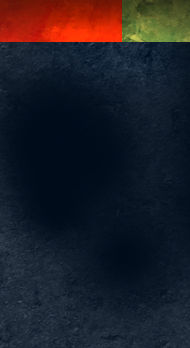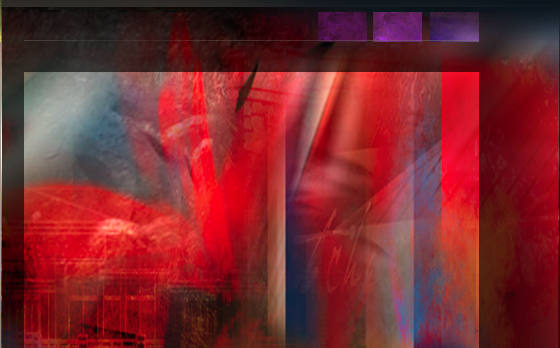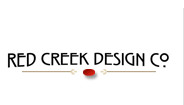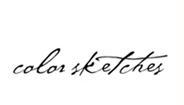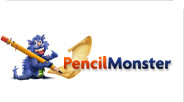Multiple Layer Masks in Photoshop
Occasionally when creating a complex illustration, it is helpful to have options when hiding portions of a layer. To consistently use nondestructive editing, a single layer mask can be a little restrictive. For example, what if you have used a layer mask to create the outline of a shrub in the landscape, and a portion of it lies behind a column?

The answer is to use a second layer mask even though Photoshop only allows one per layer. Place the shrub layer inside of a group. A layer mask can then be applied to the group, allowing the option of a second mask. A section of the shrub can be removed without destroying the mask defining the shrub itself. Groups can be nested within groups, creating the option of several masks per layer.
Symmetry, Simplicity, Art, Design
Alone, iconic, and symmetrical, the design calls for a landscape feature at the center of a round about. As it will be seen from all sides, it must be the same on all sides. Themed and representative, the style must accentuate the identity while not being obtrusive. It must be highly visible while not blocking any views. The design answer is symmetrical and simple.

Like the design, the illustration portrays the same simplicity. Only a hint of background and a grass line foreground, suggest the environment but do not detract from the focus. The spray and fall of water provide compositional balance between the landscape’s features. The color palette is simple and light so as not to be a part of the design presentation.
When the design question calls for a simple answer, keep it simple. When the design is simple, quiet elegant artwork will keep the focus where it belongs: on the design. Symmetry between design and the representational artwork is a very, very effective strategy.
Art: Learn, Repeat, Internalize
When creating art with digital media, there are a lot of different skills to learn. It is important to learn all of the skills and concepts necessary for working with traditional media, such as composition, color, and so forth. Digital media also requires a working knowledge of painting software, computer systems, and print methods. Some of my discussions here involve traditional concepts, while others are purely digital.

It is important to keep in mind that the ColorSketches Tips are learning devices. Yes, they can be added to your growing list of art tools, but more importantly keep in mind that the challenge they solve can often be accomplished in multiple ways. Rather than just copying the routine, think about why it works, and see if you can expand upon the concepts in your own artwork. Always Learn, Repeat, and Internalize. Obtain and Learn new knowledge, Repeat it until it can be done without thinking. Then Internalize the concept – make it you own, apply your own twist to it, and use it to expand and create new concepts based on the fundamentals.
Keeping the Perfect Digital Colors
When working on a commercial art project, it is not unusual to receive change requests from the client. It is also not unusual to receive a new project based on an old one, months or even years later. The challenge that often arises; how to paint new areas with the exact same color mix from before. Photoshop and Painter will let you save color swatches in palettes. This may not work very well for two reasons. First, the swatch file is a separate file that must be saved and stored with each piece of art. Secondly, brushes will often mix two colors, and you may not remember which two colors from the swatches were used for each mix. A little trick, is to save the colors samples on their own layer within the artwork itself.

Saving each color used in the artwork provides an easy reference, even years after the piece was created. Group or name the color layers with a standard system that enables easy reference to color mixes and their location in the artwork. Changing areas within the art are easy with the perfect color match. The color groupings can also be handy for creating a new piece of artwork with a similar or matching color scheme.
The Color of Landscaping
In an architectural rendering, using bold colors that complement the colors of the building can make a dramatic impact on the presentation.

In this example, the seasonal blooms on the Royal Poinciana turn a very basic illustration into a very striking and vibrant one.

Illustrating an Isolated Subject
When designing and illustrating an isolated subject, it is not necessary, and possibly distracting to render the surrounding area. Simply suggesting a background and foreground can really make the subject stand out.

Abstractly edging the illustration, creating a vignette, can further simplify the graphic. The sketched white overlay on the background and side landscaping saved a lot of rendering time as well as creating a unique border around the subject.
Architectural Lighting in Illustration
It is not just the glow from lighting that can add character to an architectural illustration. The light fixtures themselves can be used to provide balance to the composition.

The design of the light fixtures can also contribute to the style and ambiance of the architecture.
Glowing Lights in Photoshop
There are always complex ways to do things, but I tend to favor simple, effective techniques. What if you are doing a dusk or night rendering in Photoshop, and you want to add some lights, shining in the darkness? Select a simple feathered brush, sample the color of the light, and make one quick dab at the location of the light bulb. That is it!

In this architectural illustration, I added a string of festive lighting by tapping the brush at even intervals at the eave line. The color is a very pale yellow, which gives the appearance of clear bulbs, but it could just as easily have been brightly colored lights. The same technique will work on a more complex light fixture such as a carriage light. Paint the carriage light, then tap in the glowing bulb. Place the glow on it’s own layer in case you want to turn the light on and off!
Visit Me on Behance
I have recently joined the Behance Network which is a web community dedicated to creatives doing exciting work spanning all disciplines of art and design. I am thrilled to be part of it. It does create more exposure for my work, but, more importantly, I am finding the networking and resources with other artists to be both fun and informative.
The above link will take you directly to my profile, but while you are there, spend some time looking at other artist’s work as well. You will find some mind blowing artwork, brilliant photography, and incredible graphic design from all over the world.
Learning Skills: Art and Design
I have always felt that there are three sides to improving art skills or design skills. The first objective, the “Creative” side, seems to be inherited to some extent, but there are many techniques and exercises to improve creative thinking. Keep in mind, even the most creative minds hit blocks now and then. They must overcome their “blocks” as everyone does. Exercises in creative thinking are varied and sometimes kind of crazy, but usually fun!
Secondly there is “Technical Expertise”. Whether you are painting with traditional watercolors, painting digitally in Photoshop, or laying out a website in Dreamweaver, there are skills that must be learned in order to create your vision effectively. By mastering the needed skills, you can concentrate more on realizing your creative vision, and less time figuring out how to accomplish the task. Many tutorials and learning materials seem to concentrate on technical expertise. They are usually fun, but often are oversimplified. Paint this here, and draw this here, now run a curves layer and set opacity to 20%… This will help you create the particular assignment, but a huge ingredient is missing. That ingredient is: Why do you do this?
Which brings up the third objective, and to me the most important one. That would be “Theory”. Theory is the underlying knowledge of art and design. Why does glass look the way it does? Why do shadows fall the way they do? Why do colors contrast differently when placed side by side? What effects do grids have on composition? How could Seurat paint detailed paintings with nothing but strategically placed colored dots? Why is that building proportionally challenged? What color is a cloud? How does light reflect when it hits water?
My mind is racing with these questions constantly. Many can just be answered by observing the world around you. Learn to not only look at the world, but actually see it. You will get some strange looks from people when they see you staring at a rock, but I guarantee they will not understand it’s texture, color, specular highlights, shadow intensities, or it’s complexity of shape. But how can you represent one, if you do not know these details?
Another great place to look for insights into theory would be the work of other artists. Look at famous artists, of course, but also look at the work of contemporary artists. The exercise I generally employ is to observe as much art as possible from many sources. When a piece of work jumps out at me, and makes me say “Wow!” as soon as I see it, I stop and analyze the piece to see what impresses me about the work. Is it composition? Is it color? Is it texture? Why do I like it? Why, why, why?
Only by exposing ourselves to new experiences and learning from them can we grow as artists. Look at the details and try to understand the theories that make them all work. With theory and technique in your grasp, your creativity can run wild.
On Andrew Wyeth
I am very saddened to hear that Andrew Wyeth has passed away at the age of 91. He has long been one of my favorite artists. His most recognized work is probably “Christina’s World”, but two of my favorites are “Trodden Weed” and “Faraway”. Two books about him are presently in my library. The book “Andrew Wyeth: Memory and Magic” is a wonderful book about him, and “Andrew Wyeth: Autobiography” has an excellent collection of his artwork. I recommend them both. If you are not familiar with Andrew Wyeth, you can see his official website at AndrewWyeth.com. Some more of his beautiful work can be seen at the Museum Syndicate and on the site of Mr. Wyeth’s representative.
Traditional Art vs Digital Art
I recently watched a special on cable about the history of Pixar. The story evolves as John Lasseter tries to introduce computer animation to Disney, only to find them bewildered by the whole idea. He starts Pixar to follow his dream, and the industry of computer animated movies takes the world by storm. Strangely, as the traditional animators see the success of computer animation, they begin to abandon the traditional arts. As I see it, the medium doesn’t really matter. It is all about content, content, content. Pixar‘s recent film, “Ratatouille”, is beautiful graphically, but it is also a very entertaining and well developed story. I do not believe it invalidates the hand drawn “Jungle Book”, it is simply a different art medium.
I see a similar battle brewing between traditional art and digital art. Digital art seems to be winning on sci-fi and game art, but that whole genre doesn’t seem to be well supported in the established world of art. I find this odd in that most traditionally painted art these days is scanned into digital form and sold in quantity as “limited edition prints”. Something that really drove this home for me, I recently ran across a web site or “club” where users could join and submit their artwork. Digitally produced artwork was not permitted. Now it’s their club, they can make whatever rules they want, but again I believe beautiful art is beautiful art. Oils, watercolors, acrylics, digital are all just different vehicles for true artists to tell their stories on canvas. Just looking at the beautiful digital work of Philip Straub, Ryan Church, or Katarina Sokolova makes my point. Is there work art?
I have been giving this a lot of thought, because I make my living as a concept designer and artist. I began my career using traditional oil paints. For many years, however, I have been working digitally. My question: will my career as an artist be stifled by the establishment because it is digital, or will I follow in the trend Pixar set and enjoy the benefits of a new medium?
My belief – art should stand or fall on the merit of it’s content, and not the choice of art medium.



